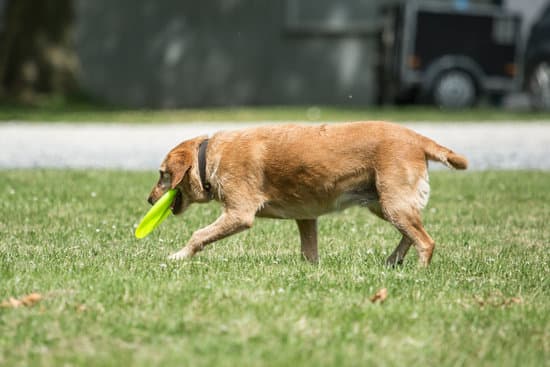German Shepherds are intelligent and loyal dogs that make wonderful companions. However, like any other dog breed, they require proper potty training to ensure a harmonious living environment. Potty training is one of the first and most essential skills you’ll need to teach your German Shepherd.
It lays the foundation for good behavior and helps prevent future accidents or destructive habits. This article will guide you through the process of potty training your German Shepherd effectively, covering everything from mindset preparation to tackling common challenges along the way.
Understanding the importance of proper potty training for German Shepherds is crucial in raising a well-behaved and happy companion. A trained German Shepherd not only ensures a clean and hygienic environment in your home but also establishes boundaries and promotes positive behavior. By properly potty training your German Shepherd, you can prevent accidents indoors, destructive chewing, and territorial marking outside the designated area.
In order to achieve successful potty training with your German Shepherd, it’s essential to prepare yourself mentally and set realistic expectations. Potty training requires consistency, patience, and perseverance, as well as understanding the unique traits of this breed. By adopting the right mindset before embarking on this journey, you can build a strong foundation for effective communication and trust with your German Shepherd during the training process.
By following the guidelines provided in this article, you can establish a consistent routine for bathroom breaks and create a designated potty area that is accessible to your German Shepherd. Additionally, positive reinforcement techniques will play an integral role in motivating your dog during their learning process. Remember that consistency is key when reinforcing desired behaviors and addressing accidents effectively.
Potty training a German Shepherd may come with its own set of challenges such as marking behaviors or outdoor distractions. This article will address these common issues while providing additional tips and tricks to facilitate successful potty training with crate training and using verbal cues. Remember, potty training takes time and effort, so maintaining a positive attitude and practicing patience and perseverance is essential.
The right mindset
Understanding the importance of mindset
Before embarking on the potty training journey with your German Shepherd, it is crucial to cultivate the right mindset. Potty training can be a challenging and time-consuming process, so it’s important to prepare yourself mentally and emotionally. Having the right mindset will not only help you stay patient and consistent but also create a positive atmosphere for your dog.
Educating yourself about potty training
The first step in preparing yourself is to educate yourself about proper potty training techniques for German Shepherds. There are various resources available, including books, articles, and online forums that can provide valuable insights into effective methods and strategies. It’s important to understand the unique traits and characteristics of German Shepherds that may affect their potty training process.
Preparing your German Shepherd physically and mentally
In addition to preparing yourself, it is equally important to prepare your German Shepherd for successful potty training. Start by ensuring that your dog is physically healthy with no underlying medical conditions that may hinder their ability to control their bladder or bowels. Consult with a veterinarian if you have any concerns.
Mental preparation involves introducing your German Shepherd to basic obedience commands such as ‘sit,’ ‘stay,’ and ‘come.’ These commands will come in handy during the potty training process when you need to redirect your dog’s attention or call them back from potential accidents.
Finally, set up a comfortable and safe environment for your German Shepherd. Remove obstacles or hazards that could cause accidents or distractions during the potty training period. By creating a calm and secure space, you are setting the stage for successful learning and development.
By approaching potty training with the right mindset, educating yourself, and preparing both mentally and physically for the journey ahead, you are laying a strong foundation for success. Remember that every dog is different, so patience, understanding, and flexibility are key throughout the potty training process. With the right mindset, you and your German Shepherd can achieve a happily potty trained companion in no time.
Setting up a designated potty area
Setting up a designated potty area is an important step in potty training your German Shepherd dog. By creating a consistent and accessible spot for your dog to eliminate, you can help them understand where it’s appropriate to go to the bathroom. This section will provide guidance on how to set up a designated potty area for your German Shepherd.
Firstly, it’s important to choose the right location for the designated potty area. Ideally, this should be an outdoor space that is easily accessible for both you and your dog. It should also be an area with easy cleanup, such as a grassy patch or an area with gravel or turf that can easily be hosed down.
Once you have chosen the location, it’s time to mark off the designated area. This can be done using various methods depending on what works best for you and your dog. One common method is using physical boundaries, such as placing garden fences or flags around the desired area. Alternatively, you can use natural markers like rocks or plants to define the area.
In addition to marking off the area physically, it’s helpful to add visual cues that signal to your German Shepherd that this is their designated potty spot. For example, you can place a specific mat or rug in the designated area that is different from other areas of your yard. You can also use scent markers by spraying a pet-specific pheromone spray in the designated spot which serves as a cue for your German Shepherd.
Setting up a designated potty area not only helps in housebreaking your German Shepherd but also provides them with consistency and structure. By consistently directing them towards this specific location when they need to eliminate, you are reinforcing their understanding of where it is appropriate to go to the bathroom. With patience and repetition, they will learn to associate this spot with elimination and will become more inclined to use it consistently.
Establishing a routine
Establishing a routine is essential when it comes to potty training a German Shepherd dog. By implementing a structured schedule, you can ensure that your dog has regular bathroom breaks, which will help them understand when and where they should eliminate. Here are some steps to follow in order to establish a routine for your German Shepherd:
- Determine the appropriate frequency: Generally, puppies should be taken outside to eliminate every 1-2 hours, as well as shortly after eating, drinking, playing, or waking up from a nap. As your dog gets older and gains better bladder control, you can gradually increase the time between bathroom breaks.
- Choose specific times: Set specific times during the day for your German Shepherd’s bathroom breaks. This could be early in the morning, before bedtime, and after meals. Consistency is key here – try to stick to the same schedule every day.
- Designate a potty area: Take your German Shepherd to the same spot in your yard each time they need to eliminate. This will help them associate that area with going potty and make it easier for them to understand where they should go.
- Use verbal cues: Choose a phrase or command that you will use consistently when bringing your German Shepherd to their designated potty area. For example, you can say “Go potty” or “Get busy.” Repeat this cue while they eliminate so that they come to associate it with going potty.
- Monitor for signs: Pay close attention to your German Shepherd’s behavior and body language throughout the day. Signs that they may need to go include sniffing around, pacing, circling, whining or barking at the door.
By following these steps and being consistent with your routine, you can help your German Shepherd develop good habits and minimize accidents inside the house.
To further enhance the success of establishing a routine for potty training a German Shepherd dog, it can be helpful to use a chart or schedule to keep track of your dog’s bathroom breaks. This can serve as a visual reminder for both you and your dog, ensuring that you stay on track with the established routine.
You can create a simple chart with columns for the time of the bathroom break, any cues or commands used, and whether your dog successfully eliminated during that time.
In addition to the chart, it is important to establish a reward system to reinforce good behavior during potty training. Whenever your German Shepherd successfully eliminates in the designated potty area, make sure to provide immediate praise and rewards such as treats or verbal reinforcement. This positive reinforcement will help motivate your dog and strengthen their association between going potty in the right place and receiving rewards.
Remember, establishing a routine requires patience and consistency. It may take some time for your German Shepherd to fully understand and adapt to the schedule, but with persistence, they will eventually develop good habits. Stay committed to following the routine every day, even on weekends or holidays, until your dog is fully potty trained.
Positive reinforcement techniques
Choosing the right rewards
During the potty training process, it is crucial to use positive reinforcement techniques to motivate and encourage your German Shepherd. One effective way to do this is by using rewards. When choosing rewards, it is important to select something that your dog finds highly motivating. This can be small treats, a favorite toy, or even verbal praise and affection. Experiment with different options to see what works best for your German Shepherd.
Timing is everything
To effectively use rewards in potty training, it is important to understand the concept of timing. The reward should be given immediately after your German Shepherd successfully eliminates in the designated potty area.
This helps reinforce the connection between the behavior and the reward, making it more likely for your dog to repeat the desired behavior in the future. If you delay giving the reward or give it at the wrong time, it may confuse your dog and diminish the value of positive reinforcement.
Consistency and variety
While treats can be a great motivator during potty training, it is essential to vary the types of rewards used. Consistently using only one type of treat may cause your German Shepherd to become less interested over time. Mix up the rewards by using a variety of high-value treats as well as verbal praise and playtime as a reward. This not only keeps things interesting for your dog but also ensures that they remain motivated throughout the training process.
Avoid punishment and negative reinforcement
It is important to note that positive reinforcement techniques focus on rewarding desired behaviors rather than punishing or scolding for accidents or mistakes. Punishing your German Shepherd for accidents can create fear and anxiety around elimination, making potty training even more difficult. Instead, focus on reinforcing consistent behaviors through positive reinforcement and addressing accidents calmly and effectively.
By utilizing these positive reinforcement techniques throughout the potty training process, you can create a positive and encouraging environment for your German Shepherd. Remember to be patient and consistent in your approach, as every dog learns at their own pace. With time and effort, your German Shepherd will become reliably potty trained and enjoy a happy and healthy life with you.
Consistency is key
Reinforcing consistent behaviors is crucial when potty training a German Shepherd dog. Consistency helps the dog understand what is expected of them and reinforces the desired behavior. It is essential to establish clear rules and expectations from the beginning and ensure that everyone in the household follows them consistently.
One way to reinforce consistent behaviors is by using positive reinforcement techniques. When your German Shepherd eliminates in the designated potty area, provide verbal praise or a treat as a reward. This positive reinforcement encourages them to continue using the designated spot for elimination.
On the other hand, accidents may happen during the potty training process. It is important to address accidents effectively without scolding or punishing your German Shepherd. Punishment can create fear and anxiety around toileting, making it more difficult to successfully train your dog.
Instead, calmly interrupt the accident if caught in progress and immediately bring your dog to their designated potty area. Cleaning up accidents thoroughly with an enzymatic cleaner is also important to eliminate any lingering scent that may attract your German Shepherd back to that spot.
| Reinforcing Behaviors | Avoiding Accidents |
|---|---|
| Use positive reinforcement techniques such as praise and rewards when German Shepherd eliminates in the designated potty area. | Avoid scolding or punishing your dog for accidents. |
| Create a consistent routine for bathroom breaks throughout the day. | Calmly interrupt accidents if caught in progress and immediately redirect your dog to their designated potty area. |
Consistency also extends beyond just reinforcing behaviors and addressing accidents effectively. It includes maintaining a regular schedule for bathroom breaks throughout the day, especially during the initial stages of potty training. This routine helps your German Shepherd develop a habit and understand when it’s time to eliminate.
In addition to consistent bathroom breaks, it is important to continue using verbal cues or commands while your German Shepherd eliminates. Using a specific phrase like “go potty” or “do your business” consistently will help them associate that command with the action of eliminating. Over time, they will learn to respond to the command, making it easier for you to guide them to the designated potty area.
Overall, consistency plays a significant role in successfully potty training a German Shepherd dog. By reinforcing consistent behaviors and addressing accidents effectively, you create a clear understanding for your dog about where and when it is appropriate to eliminate. Maintaining this consistency throughout the training process will ultimately lead to a well-trained and reliably housebroken German Shepherd.
Addressing common challenges
Potty training a German Shepherd can come with its fair share of challenges. Common issues that many owners face include marking behaviors, incontinence, and outdoor distractions. However, with patience and consistency, these challenges can be overcome.
One common challenge during potty training is marking behavior. Marking refers to when a dog urinates on vertical surfaces or objects as a way to establish territory. German Shepherds are known to have a strong instinct to mark, so it’s important to address this behavior early on.
One effective technique is to keep your dog on a leash while indoors and closely supervise them. If you notice them starting to mark, redirect their attention using a verbal cue or by leading them outside to their designated potty area. Consistency is key in tackling marking behavior – be sure to clean any indoor accidents thoroughly with an enzymatic cleaner to remove the scent and discourage future marking.
Incontinence can also be a challenge during the potty training journey. Some German Shepherds may have difficulty controlling their bladder or bowels, leading to accidents indoors. It’s important to rule out any medical issues by consulting with your veterinarian.
If there are no underlying health problems, you can try incorporating more frequent bathroom breaks into your routine and gradually increasing the duration between breaks as your dog becomes more reliable. Additionally, consider using belly bands or diapers as temporary solutions for managing incontinence while working on potty training.
Outdoor distractions can pose a challenge when trying to train your German Shepherd to eliminate outside consistently. These distractions can include noises, other animals, or interesting scents in the environment. To address this issue, start by choosing a quiet and secluded spot for your dog’s designated potty area where they are less likely to get distracted.
When taking them outside for bathroom breaks, keep them on a leash and use verbal cues or commands to redirect their attention back to the task at hand. If your dog does get distracted, gently guide them back to the designated potty area and wait patiently for them to eliminate before offering praise and rewards. Consistency and practice in a controlled environment will help your German Shepherd become less susceptible to outdoor distractions during potty training.
Dealing with marking behavior, incontinence, and outdoor distractions can be challenging, but it’s important to approach these issues with patience and understanding. Remember that each dog is unique and may require different strategies. By remaining consistent, using positive reinforcement techniques, and seeking additional guidance if needed, you can successfully navigate these common challenges on the journey towards a potty trained German Shepherd.
| Common Challenges | Tackling Techniques |
|---|---|
| Marking Behavior | – Keep your dog on a leash indoors\n – Redirect their attention when they start to mark\n – Clean indoor accidents thoroughly\n |
| Incontinence | – Consult with a veterinarian to rule out medical issues\n – Incorporate more frequent bathroom breaks into the routine\n – Consider using temporary solutions like belly bands or diapers |
| Outdoor Distractions | – Choose a quiet and secluded spot for the designated potty area\n – Use verbal cues or commands to redirect attention\n – Guide the dog back to the potty area if distracted\n- |
Patience and perseverance
Potty training a German Shepherd takes time, effort, and above all else, patience and perseverance. It is important to understand that each dog is unique and will learn at their own pace. Some German Shepherds may pick up on potty training quickly, while others may take longer to grasp the concept. Regardless of the timeline, it is crucial to maintain a positive attitude throughout the entire process.
One key aspect of patience and perseverance in potty training is remaining calm and composed when accidents happen. Accidents are inevitable during the training process, especially in the early stages.
It’s important not to scold or punish your German Shepherd for accidents as this can confuse them and create a negative association with going potty. Instead, clean up accidents promptly using an enzymatic cleaner to remove any odor that may attract your dog back to that spot, and continue with your training routine without dwelling on the accident.
Consistency is also paramount when it comes to potty training a German Shepherd. Stick to the established routine of regular bathroom breaks and taking your dog to their designated potty area consistently. Reinforce consistent behaviors by using positive reinforcement techniques such as rewards and praise every time your dog eliminates in the correct spot. Celebrate small victories along the way and maintain consistency in your approach even if there are setbacks or challenges.
Remember that every dog learns differently, so it’s essential to be patient and adaptable when it comes to potty training your German Shepherd. Some dogs may require more time or different methods before they fully grasp where they should go potty. Understand that progress will come with consistency, positive reinforcement, and plenty of patience on your part as their owner or trainer.
By maintaining a positive attitude throughout the process of potty training your German Shepherd, you will create a more enjoyable experience for both you and your furry friend. With patience and perseverance, you can successfully navigate through any challenges that arise during the journey toward having a fully potty trained German Shepherd. Stay consistent, celebrate small wins, and keep your dog’s well-being and happiness at the forefront of your training efforts.
Additional tips and tricks
In addition to the strategies mentioned earlier, there are several additional tips and techniques that can aid in the successful potty training of a German Shepherd dog. These supplementary methods can further reinforce desired behaviors and accelerate the learning process for your furry friend.
One valuable technique to consider is crate training. This involves introducing your German Shepherd to a crate or a confined space where they can feel safe and secure. Dogs have an instinctual desire to keep their living spaces clean, so by using a properly sized crate, you can leverage this instinct during potty training. Ensure that the crate is large enough for your dog to stand up, turn around, and lie down comfortably.
The idea is to create a positive association with the crate as a den-like space and not as a form of punishment. Use treats, toys, and praise to encourage your dog to enter the crate willingly. When indoors, keep them in the crate when you cannot supervise them closely. Let them out at regular intervals for bathroom breaks or playtime.
Verbal cues are another effective tool to aid in potty training. By associating specific words or phrases with going potty, you can communicate your expectations to your German Shepherd more effectively. Choose simple and consistent phrases such as “go potty” or “do your business.”
Use these cues every time you take your dog outside to eliminate so they begin to associate the phrase with the action itself. Be patient and wait for them to finish before offering praise and rewards. Over time, they will understand what is expected of them when they hear these verbal cues.
It’s worth noting that accidents may still happen during the training process even with these additional tips in place. Remember to stay calm and refrain from scolding or punishing your German Shepherd if accidents occur inside the house or outside of their designated potty area.
Accidents are part of the learning process, especially for young puppies who may not have full bladder control yet. Instead, redirect their attention to the appropriate spot and clean up any messes promptly with an enzymatic cleaner to eliminate odor and discourage repeat incidents.
By incorporating these additional tips and techniques into your potty training routine, you can optimize the learning experience for your German Shepherd. With consistency, positive reinforcement, and patience, your dog will soon understand and follow your expectations regarding potty behavior. Remember to remain persistent and maintain a positive attitude throughout the process as you work towards successfully potty training your German Shepherd dog.
Conclusion
In conclusion, potty training a German Shepherd dog is an essential process that requires patience, consistency, and positive reinforcement. By following the outlined steps, you can ensure that your German Shepherd becomes successfully potty trained.
Throughout the article, we have emphasized the importance of having the right mindset and preparing both yourself and your dog for the training process. Creating a designated potty area and establishing a routine are crucial in helping your German Shepherd understand where and when they should eliminate. Using positive reinforcement techniques such as rewards and praise will motivate and encourage your dog to continue with their good behavior.
It is important to remember that consistency is key in potty training a German Shepherd. Reinforcing consistent behaviors while addressing accidents effectively will help them understand what is expected of them. Additionally, common challenges like marking, incontinence, and outdoor distractions can be overcome with patience, perseverance, and proper handling techniques.
Lastly, make use of additional tips and tricks such as crate training and verbal cues to facilitate successful potty training. Remember that this process takes time and effort; maintaining a positive attitude throughout will ensure better results.
By implementing these strategies consistently and providing encouragement for your German Shepherd along the way, you can achieve a successfully potty trained dog. Remember to be patient, stay consistent, and create a positive environment for your furry friend to thrive in their journey towards mastering proper bathroom habits.
Frequently Asked Questions
Are German shepherds hard to potty train?
German shepherds can sometimes be a bit challenging to potty train, but with consistent training and patience, they can learn quickly. Like any other breed, the key is establishing a consistent routine and providing positive reinforcement. It’s important to take them outside regularly, especially after meals or naps, and reward them with treats and praise when they eliminate in the appropriate place.
Avoid punishing your German shepherd for accidents indoors, as it can create confusion and hinder the training process. By being diligent and committed to their training, German shepherds can become reliably potty trained.
How do I stop my German Shepherd from peeing in the house?
To stop a German Shepherd from peeing in the house, it’s crucial to address the root cause of the behavior while maintaining a patient and positive approach. Firstly, make sure there are no underlying medical issues causing frequent urination by consulting with a veterinarian. Once medical concerns are ruled out, focus on reinforcing consistent bathroom habits through proper training techniques.
Establish a regular schedule for outdoor bathroom breaks and ensure your German Shepherd has ample opportunities to relieve themselves outside. Supervise them closely indoors and intervene if you catch them about to pee by redirecting them outside or into an appropriate area with puppy pads. Consistent positive reinforcement for eliminating outdoors paired with effective supervision will aid in breaking the habit of peeing indoors.
How do you train a German Shepherd to pee and poop outside?
Training a German Shepherd to pee and poop outside involves establishing clear communication between you and your dog while utilizing positive reinforcement tactics consistently. Start by designating an appropriate potty area outside that is easily accessible for both of you. Take your German Shepherd to this dedicated spot several times throughout the day, especially after meals or waking up from sleep since these are common times they need to eliminate. Use verbal cues such as “potty” or “go pee” whenever they start eliminating as this helps build an association over time between the command and desired behavior.
Praise them lavishly when they finish eliminating outside and consider using treats as a reward. Avoid scolding or punishing accidents indoors, as this can create confusion and fear. With time, patience, and consistent positive reinforcement, your German Shepherd will learn to associate outdoor elimination with rewards and develop reliable bathroom habits.

Welcome to the blog! I am a professional dog trainer and have been working with dogs for many years. In this blog, I will be discussing various topics related to dog training, including tips, tricks, and advice. I hope you find this information helpful and informative. Thanks for reading!





